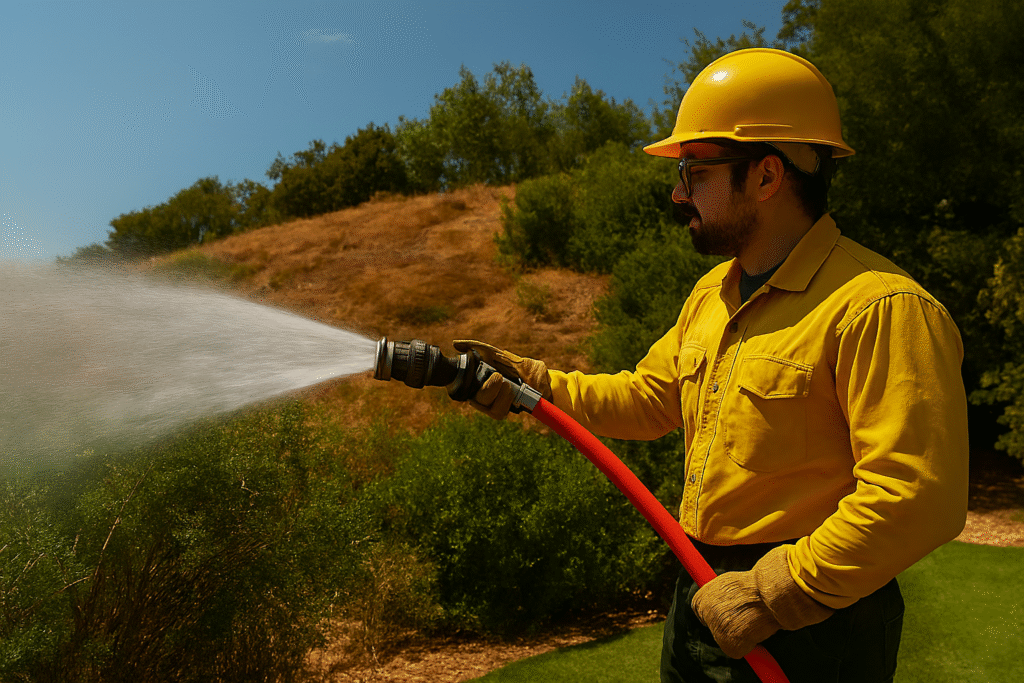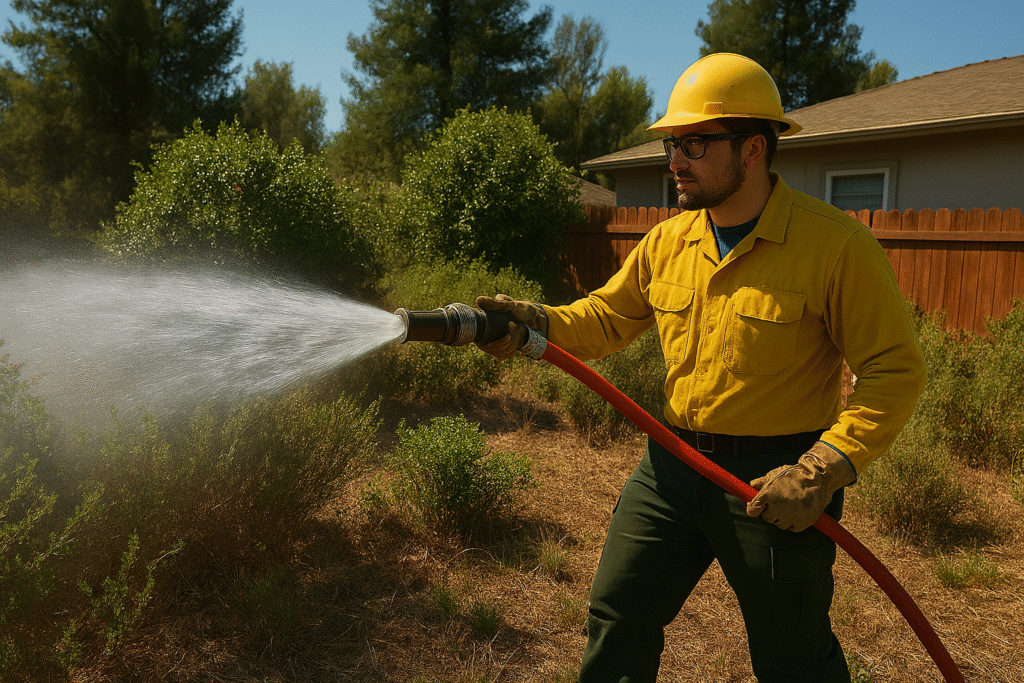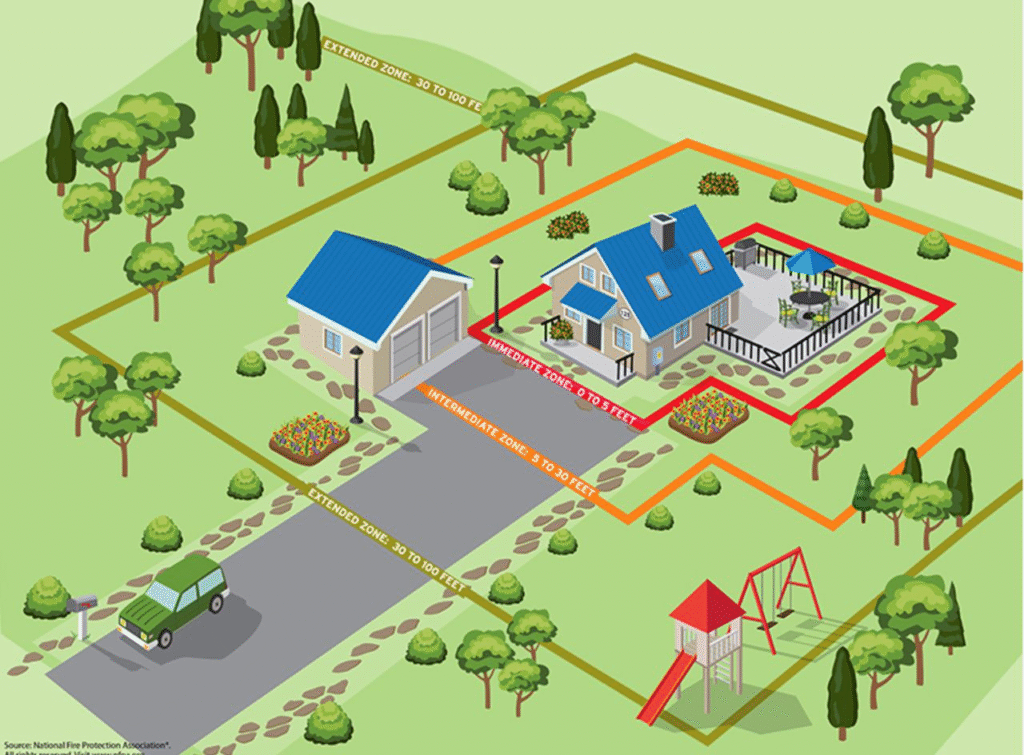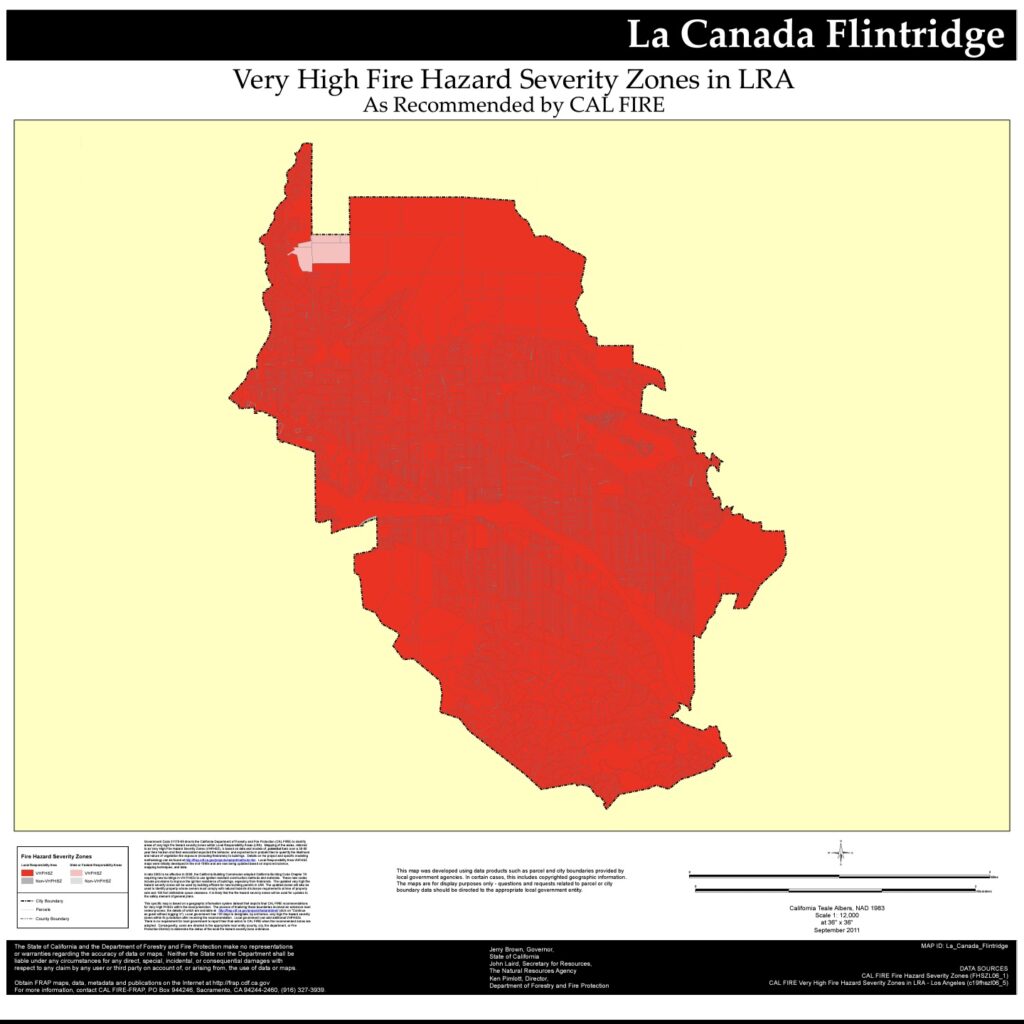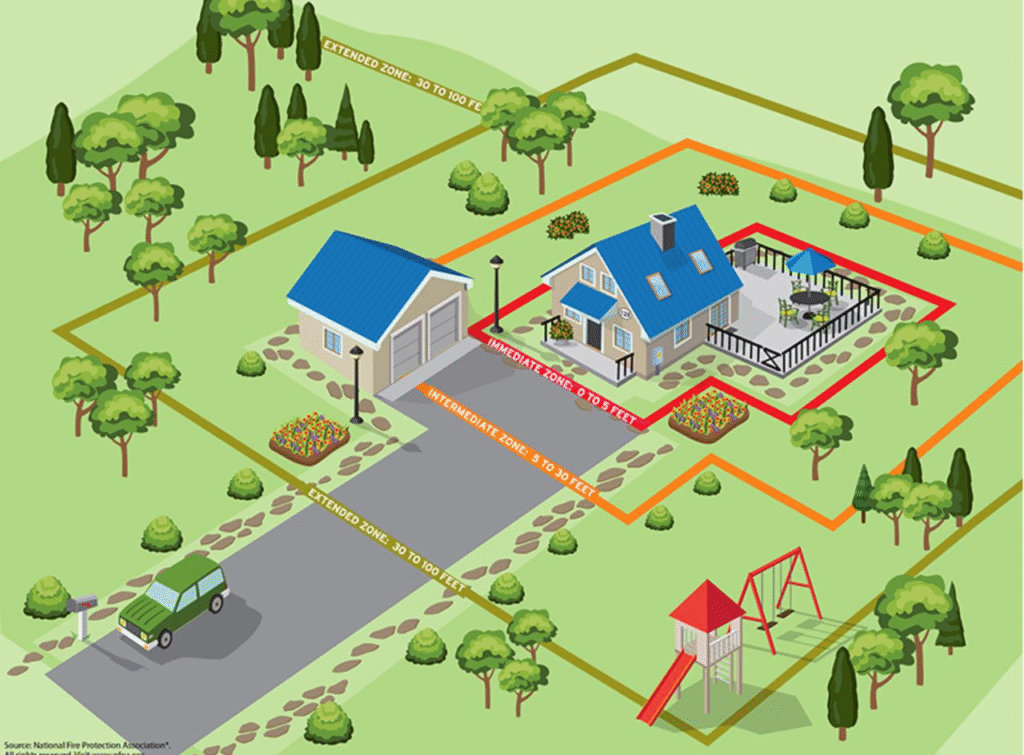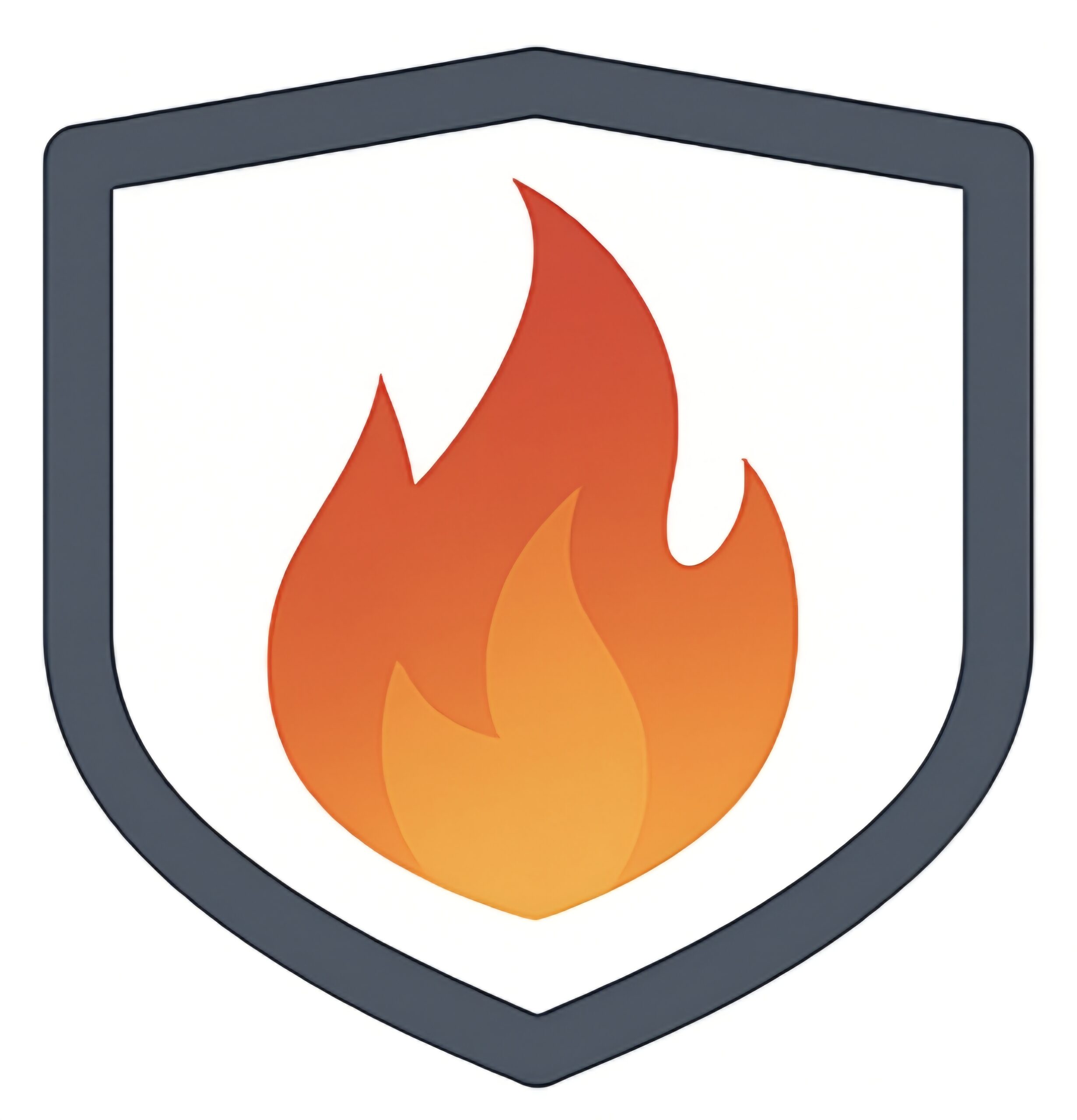Our fire retardant works primarily by altering the chemical properties of burning fuel to make it non-flammable, while also providing cooling and oxygen-depleting effects to slow or stop a fire. Applied as a clear mixture with water, it coats vegetation with a sticky coating of organic material that, when heated, trigger a chemical reaction. This reaction consumes heat energy and produces non-flammable carbon material and water vapor, which further cools the fuel and suffocates the fire by blocking its oxygen supply.
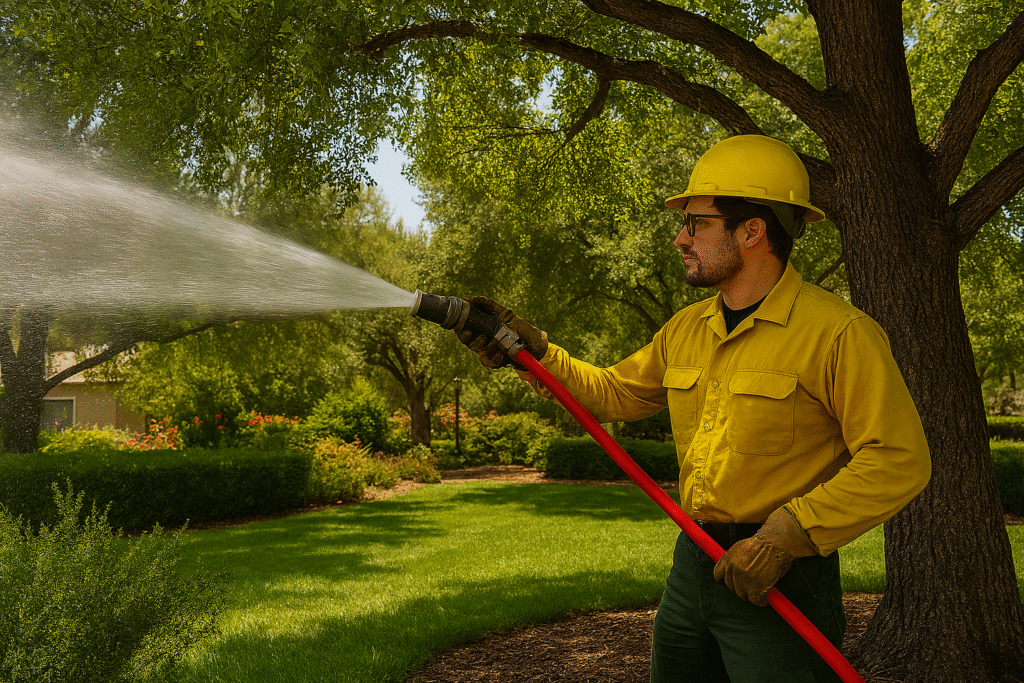
Chemical Action
- Alters fuel decomposition: The retardant changes how plant cellulose breaks down when exposed to heat, preventing it from forming flammable gases.
- Creates non-flammable carbon:Instead, the cellulose is converted into a non-combustible carbon material, which also provides an insulating layer.
- Neutralizes chemical radicals:The retardant’s components react with the tiny reactive particles (radicals) that sustain the fire, stopping the chain reaction and inhibiting combustion.
Physical Action
- Cools the fuel:The water mixed with the retardant absorbs heat as it turns into steam.
- Depletes oxygen:The coating of retardant on the fuel also restricts the flow of oxygen to the fuel.
- Forms an insulating barrier: The carbonized material left behind after the chemical reaction helps to insulate the fuel and block air from reaching it.
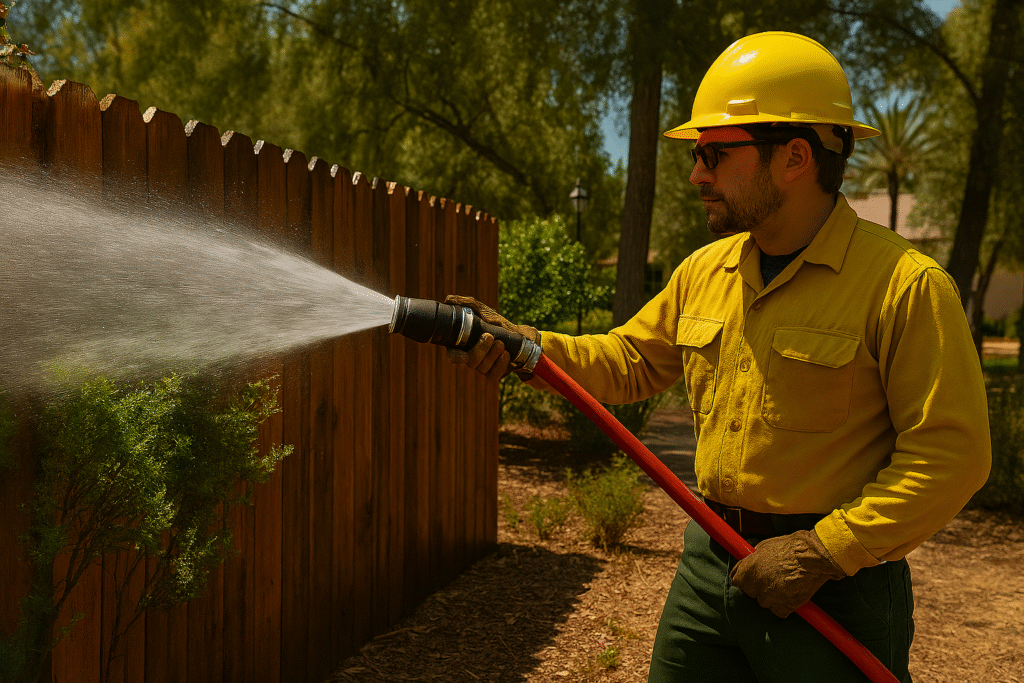
How it’s applied
- Our product is a concentrate that is mixed with water and then sprayed onto planting, trees, and other combustibles.
- The retardant can also be applied trough a suppressing system that can be activated remotely.
- Over time as the retardant breaks down or is washed away by rain it will need to be reapplied at a latter point depending on the amount of rain fall.


